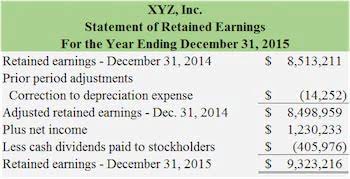
These methods are FIFO(First In, First Out) Inventory, LIFO(Last In, First Out) Inventory, Specific Identification Method, and Weighted Average Cost. In these circumstances, to reduce the First In First Out value of inventory to the Last In First Out value, the Last In First Out reserve needs to be a credit entry. This credit balance is then offset against the FIFO inventory valuation resulting in a net balance representing the LIFO valuation. Consequently the Last In First Out reserve account is used as a contra inventory account or more generally a contra asset account. Assuming prices are increasing, the FIFO valuation of inventory will therefore be greater than the LIFO valuation. As we are already aware, the LIFO reserve calculation will represent the difference between the value of closing inventory calculated using both LIFO and FIFO.
Practical Applications of the LIFO Method
This is a warning sign for investors because it indicates that the company may be financially weak. Current ratio is a liquidity ratio that measures a company’s ability to pay short-term obligations. This ratio is important because it indicates a company’s ability to meet its short-term obligations. A high current ratio indicates that a company is financially strong and has the ability to pay its debts on time. On the other hand, a low current ratio indicates that Accounting for Churches a company is financially weak and may have difficulty paying its debts on time. The best option for a company using LIFO Reserve depends on the company’s financial goals and objectives.
Find the talent you need to grow your business

Companies should closely monitor changes in LIFO reserves as an indicator of inventory and cost management practices over time. Company ABC used the LIFO method, whereas another competitor company used the FIFO method for inventory valuation. The current ratios of both companies cannot be compared due to this difference in reporting. If the company reports inventory with the LIFO method, the COGS will be higher, and the gross profit will be low. In this way, the company will have to pay low taxes than what they would have to pay by using the FIFO method. But these impact the tax liability, profits, cash flows, and other financial aspects.

Conclusion: Key Insights on the LIFO Reserve in Accounting
- The difference between the inventory value under LIFO and what it would be under FIFO is known as the LIFO reserve.
- Should a company wish to make any changes to the accounting method, they must do so on Form 3115 – Application for Change in Accounting Method.
- You don’t need to worry about rotating inventory or tracking older items closely.
- One method of valuing inventory that is commonly used is LIFO, or Last-In, First-Out.
- Audits help uncover any counting errors, theft, damage, obsolescence issues, or other problems causing differences between booked LIFO reserve levels and actual inventory.
Understanding this reserve is essential for analysts as it provides insights into a company’s inventory management, profitability, and tax liabilities. Understanding lifo reserve adjustments is crucial for financial analysts, especially when comparing companies that use different inventory accounting methods. The Last-In, First-Out (LIFO) method assumes that the most recently acquired items are sold first, which can lead to a LIFO reserve, particularly in times of rising prices. This reserve represents the difference between the cost of inventory calculated using the LIFO method and its cost using the First-In, First-Out (FIFO) method. Adjusting for LIFO reserves is essential for analysts seeking to make apples-to-apples comparisons between companies, assess true profitability, and understand cash flow implications.
LIFO Liquidation
In order to use LIFO, a company must formally elect to do so through filing Form 970 – Application to Use LIFO Inventory Method. Should a company wish to make any changes to the accounting method, they must do so on Form 3115 – Application for Change in Accounting Method. Through a review of their internal price experience, a company can identify the LIFO methods most suitable for their financial and tax reporting needs. The scope of the LIFO election and the precise methodology for calculating the LIFO index should be determined based on what works best for the client.
As the above entry shows, the value of COG rises due to higher value of the recent materials that will move out of the inventory stock first. Boost your confidence and master accounting skills effortlessly with CFI’s expert-led courses! Choose CFI for unparalleled industry expertise and hands-on learning that prepares you for real-world success.

Using the Weighted Average Method for Inventory

It is an account used to bridge the values of inventory accounting methods, allowing for better comparisons and more accurate financial analysis and reporting. Companies using LIFO are required to disclose certain information in their financial statement notes, including the LIFO reserve and the effect of LIFO on their income. Understanding these impacts is crucial for financial analysts, investors, and managers when interpreting financial statements and making comparisons between companies using different inventory valuation methods. It provides tax benefits and can improve cash flow in the short term, but it also requires careful analysis to understand its long-term impact on what is lifo reserve a company’s financial health.
- The best option for a company using LIFO Reserve depends on the company’s financial goals and objectives.
- The IRS allows a company to switch its inventory accounting method to LIFO, but once it makes this change, it must receive IRS approval to change it again.
- The purpose of the LIFO reserve, also known as the “LIFO allowance,” is to bridge the gap between the LIFO (Last In, First Out) and FIFO (First In, First Out) inventory accounting methods.
- They should categorize inventory items and establish LIFO pools if using dollar-value LIFO.
- He has been a manager and an auditor with Deloitte, a big 4 accountancy firm, and holds a degree from Loughborough University.
- If a company wants to protect itself from the effects of inflation, LIFO Reserve is also a good option.
- Businesses should calculate the current year’s inventory at both base year cost and current cost.
Given the LIFO reserve’s impact on earnings and profitability metrics, companies should communicate reserve changes and assumptions effectively in financial statement disclosures. Enhanced transparency allows shareholders to interpret performance trends appropriately accounting for inventory cost impacts. Selling old inventory layers means tapping into cheaper costs bookkeeping reflected on older balance sheets.

